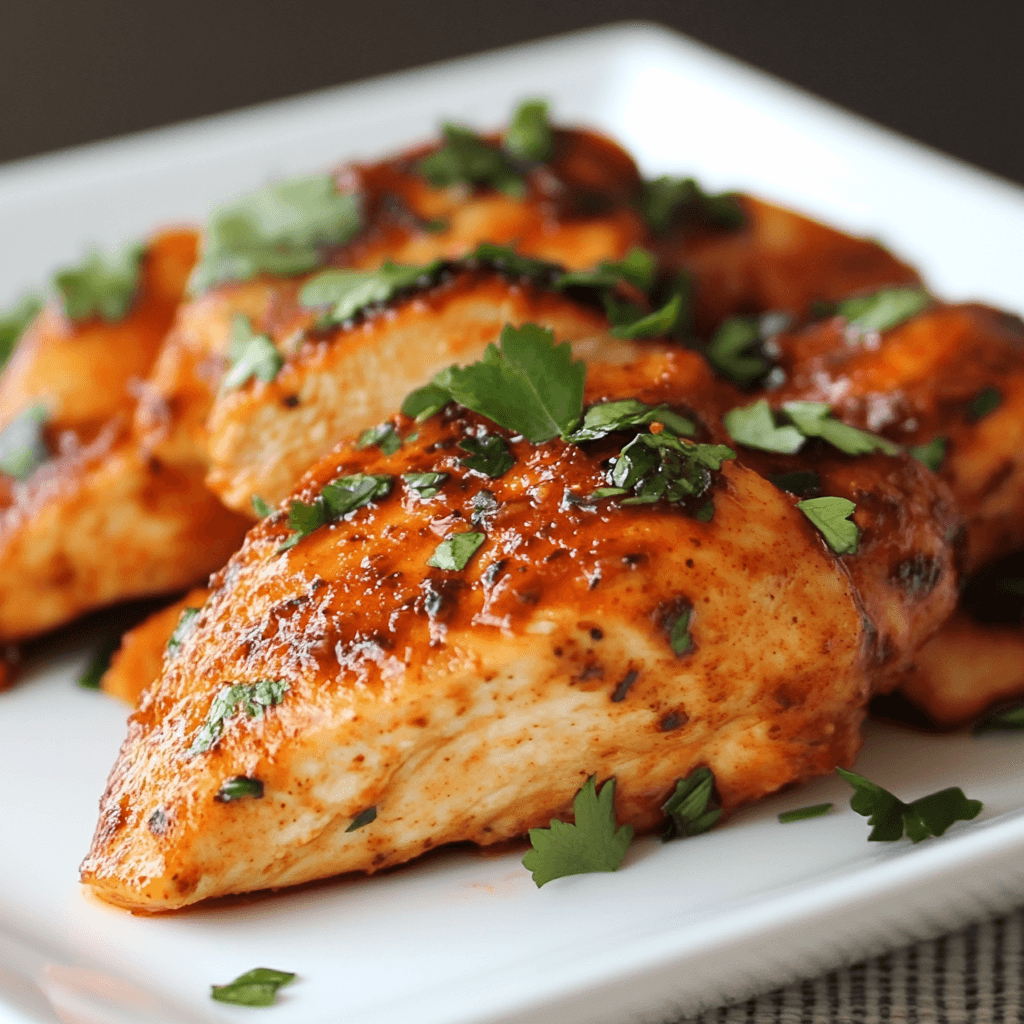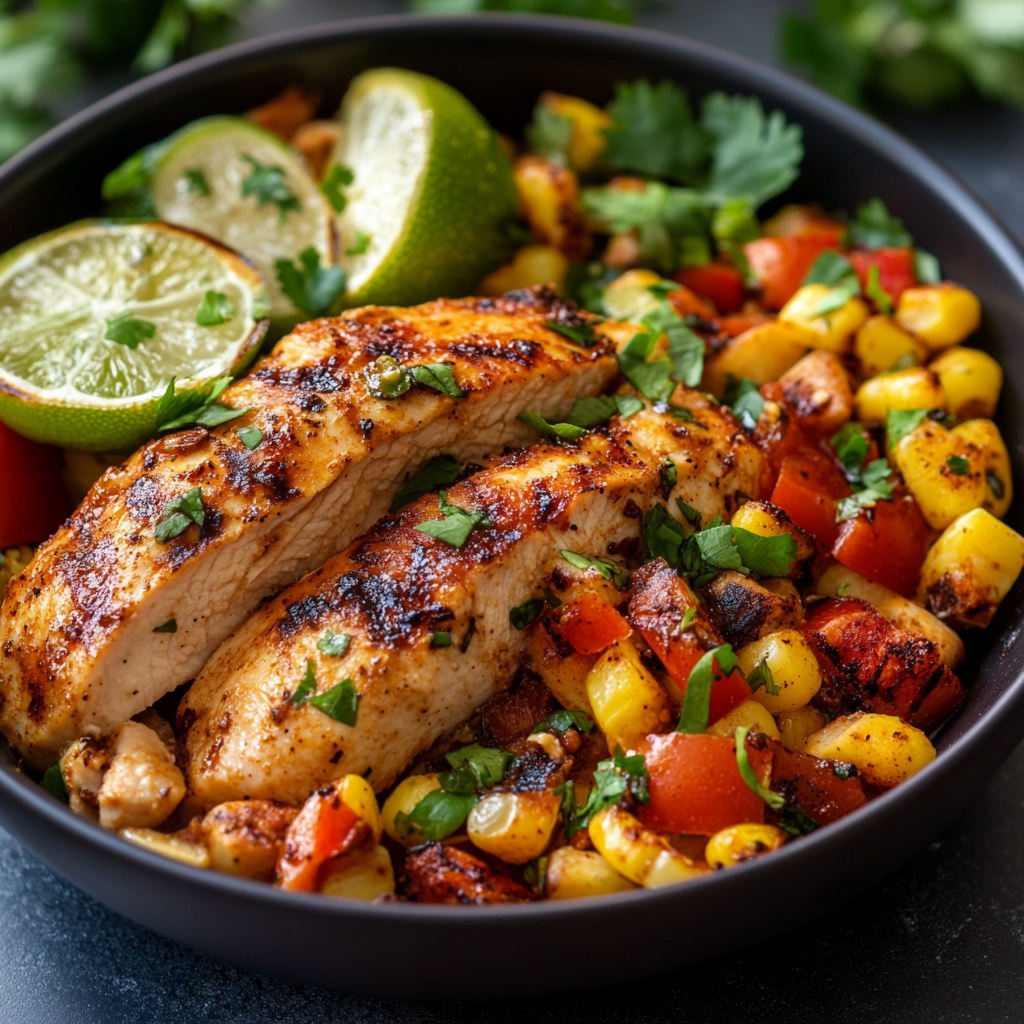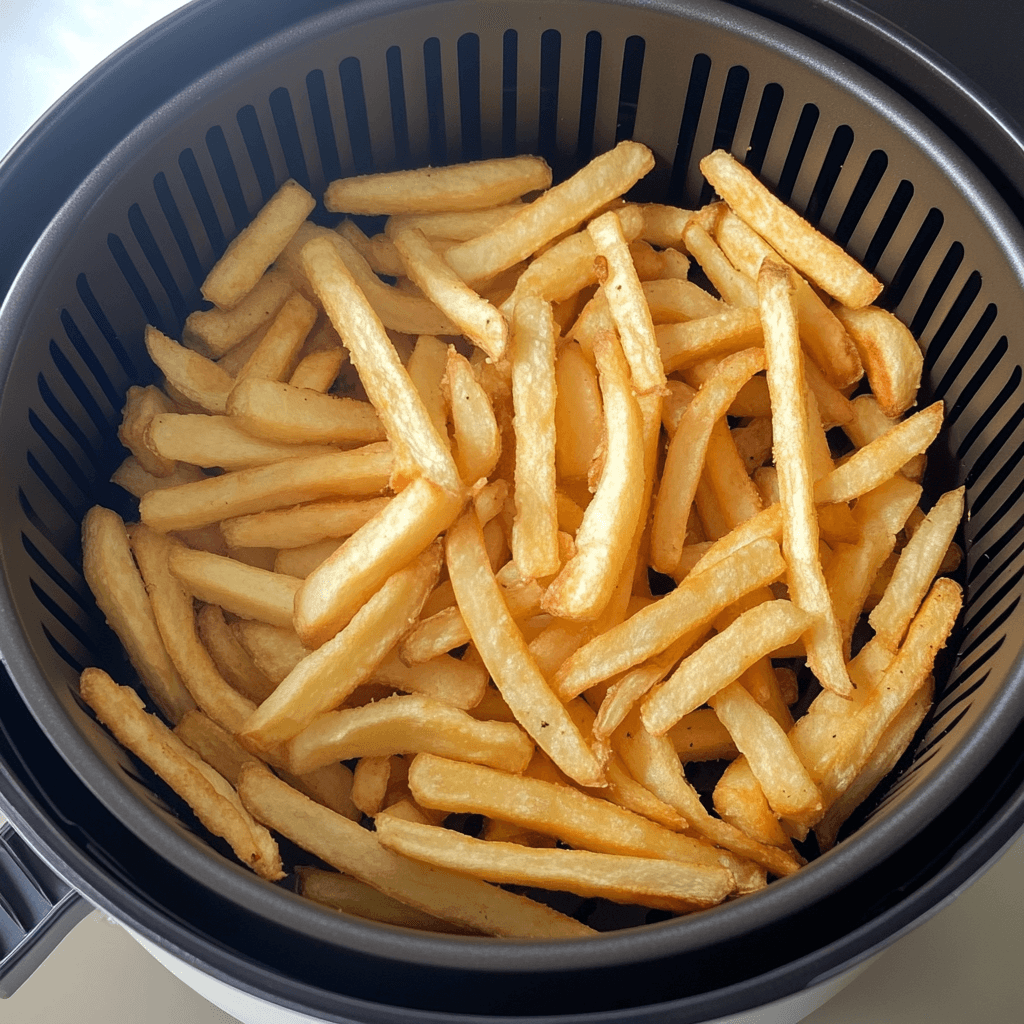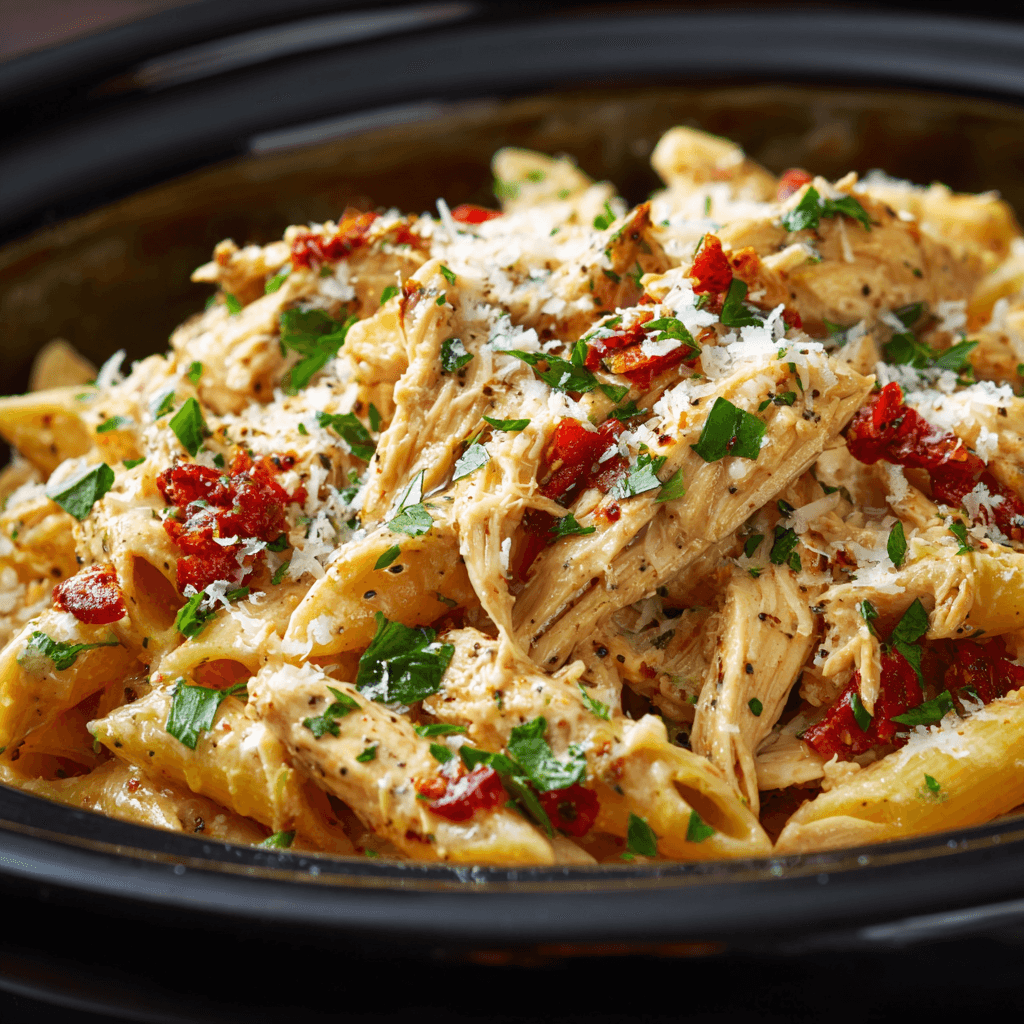Introduction to Chipotle Chicken Recipe
What is a Chipotle Chicken Recipe?
Chipotle chicken is a must-try recipe that combines smoky, spicy, and tangy flavors. This chipotle chicken recipe is simple, versatile, and perfect for any occasion, making it a favorite for home cooks. This recipe marries bold flavors with simple cooking techniques, making it a favorite for family dinners, meal prep, or even entertaining guests.
Origins and Cultural Significance
The term “chipotle” originates from the Nahuatl word chīlpōctli, meaning “smoked chili.” Chipotle peppers, which are essentially smoked and dried jalapeños, have deep roots in Mexican cuisine. They were traditionally used as a method to preserve chilies and impart a rich, smoky flavor. Today, chipotle peppers are celebrated globally, especially in Mexican-American fusion dishes, for their distinctive taste and versatility.
Why Chipotle Flavors are So Popular
The appeal of chipotle lies in its unique blend of heat and smokiness, which enhances a wide array of dishes. Chipotle chicken has gained immense popularity because it offers a flavor-packed experience while remaining simple to prepare. Its adaptable profile makes it a perfect addition to tacos, burritos, salads, and even pasta dishes.
Key Ingredients for Chipotle Chicken
Essential Spices and Flavors
To achieve the authentic chipotle taste, the following spices and ingredients are must-haves:
- Chipotle peppers in adobo sauce: The heart of the dish, these peppers provide smokiness, heat, and depth of flavor.
- Garlic and onion: These aromatic staples build a robust base for the marinade.
- Cumin and smoked paprika: These spices amplify the smoky undertones.
- Lime juice: Adds a refreshing tang to balance the heat.
- Honey or brown sugar: Provides a hint of sweetness to complement the spice.
Fresh vs. Store-Bought Ingredients
- Fresh Ingredients: Using fresh lime, garlic, and herbs elevates the flavor profile, ensuring a vibrant and authentic taste.
- Store-Bought Ingredients: While fresh is always preferable, high-quality canned chipotle peppers and pre-ground spices can save time without compromising much on taste. Opt for organic or preservative-free options when possible.
Ingredient Substitutions for Dietary Preferences
- For a milder heat: Substitute chipotle peppers with smoked paprika and a touch of tomato paste for a smoky flavor without the spice.
- For sweetness alternatives: Swap honey with agave syrup or maple syrup for vegan-friendly sweetness.
- For low-sodium needs: Use salt-free seasonings and low-sodium adobo sauce to control sodium intake.
- For plant-based options: Replace chicken with hearty vegetables like cauliflower or protein alternatives like tofu or tempeh.
By understanding the essential elements of chipotle chicken and tailoring them to your needs, you can create a dish that is as authentic or customized as desired. Stay tuned for the step-by-step cooking guide that follows!
Selecting the Perfect Chicken Cuts
Bone-In vs. Boneless Chicken
Deciding between bone-in and boneless chicken often depends on how you plan to cook it and your preferences:
- Bone-In Chicken: This type adds more flavor because the bone releases juices while cooking. It is also great for slow cooking or grilling.
- Boneless Chicken: Since it cooks faster, it works well for recipes that require quick preparation, like stir-fries or tacos. It also absorbs marinades more evenly.
Thighs vs. Breasts: Which Works Best?
- Chicken Thighs: These cuts are juicier and more flavorful. They handle smoky and spicy marinades better, which makes them ideal for this recipe.
- Chicken Breasts: Although they are lean and cook quickly, they can dry out easily. Marinating them for longer helps keep them moist and tender.
Tips for Choosing Fresh Chicken
- Appearance: Always look for chicken that has a pink color and no discoloration. Avoid any chicken that feels slimy or smells bad.
- Packaging: If you are buying packaged chicken, check that the seal is tight and the expiration date is valid.
- Source: Choosing organic or free-range chicken ensures better quality and taste, as these options are raised without added antibiotics or hormones.
The Magic of Chipotle Peppers
What are Chipotle Peppers?
Chipotle peppers are jalapeños that have been smoked and dried. This process enhances their natural sweetness and gives them a deep, smoky flavor. They are commonly used in marinades, sauces, and spice mixes to create bold and delicious dishes.
Types of Chipotle Peppers: Powder, Canned, and Dried
- Chipotle Powder: Made by grinding dried chipotle peppers, this option is simple to use. You can easily sprinkle it into spice rubs or seasoning blends.
- Canned Chipotle Peppers in Adobo Sauce: These peppers are versatile because they come with a flavorful sauce. They are perfect for marinades, soups, or stews.
- Dried Chipotle Peppers: These are great for slow-cooked dishes or broths. Soaking them in water before cooking releases their full flavor.
Storing Chipotle Peppers for Maximum Freshness
Dried Chipotle Peppers: Put these peppers in a sealed bag or jar and store them in a dark, dry place. If stored properly, they can last over a year.
Canned Peppers: Once opened, move any leftovers into a sealed container. Store them in the fridge for up to a week or freeze them in portions for six months.
Chipotle Powder: Keep the powder in a sealed jar and store it in a cool, dry spot. This keeps it fresh for up to a year.
Equipment Needed for the Recipe
Must-Have Kitchen Tools
To prepare chipotle chicken effectively, you’ll need:
- Cutting Board and Knife: For chopping chicken and other ingredients.
- Mixing Bowl: To prepare and combine the marinade.
- Measuring Cups and Spoons: To ensure the right balance of flavors in the marinade.
- Tongs: To handle and turn the chicken during cooking.
- Cooking Pan or Grill: Depending on your chosen cooking method.
Optional Gadgets for Efficiency
While not necessary, these gadgets can make the process smoother:
- Food Processor or Blender: To blend the marinade ingredients quickly and evenly.
- Meat Thermometer: To check for doneness and avoid overcooking.
- Marinade Injector: For infusing flavors directly into the chicken, especially for larger cuts.
Preparing Your Cooking Space
- Clean and Organize: Ensure your workspace is clean and clutter-free for smooth preparation.
- Gather Ingredients: Measure and arrange all ingredients in advance.
- Preheat Equipment: If using an oven or grill, preheat it to the required temperature before starting.
Preparing the Chipotle Marinade
Ingredients for the Perfect Marinade
For a bold and flavorful marinade, you’ll need:
- Chipotle peppers in adobo sauce
- Fresh garlic and onion
- Lime juice
- Olive oil
- Honey or brown sugar
- Ground cumin and smoked paprika
- Salt and black pepper
Step-by-Step Process
- Blend or Mix: Combine chipotle peppers, garlic, onion, lime juice, olive oil, and honey in a blender or mixing bowl.
- Add Spices: Stir in cumin, smoked paprika, salt, and black pepper.
- Adjust Consistency: Add a splash of water if the marinade is too thick.
How Long to Marinate for Optimal Flavor
- Minimum Time: Marinate the chicken for at least 30 minutes to allow the flavors to penetrate.
- Ideal Time: For the best results, marinate the chicken for 4–6 hours in the refrigerator.
- Overnight Option: Marinating overnight intensifies the flavor but avoid exceeding 24 hours, as the acid from the lime juice can begin to break down the chicken too much.
Cooking Methods: Choosing the Right One
Grilling the Chipotle Chicken
Grilling brings out a smoky flavor that complements the chipotle marinade perfectly:
- Preheat the grill to medium-high heat.
- Lightly oil the grill grates to prevent sticking.
- Place the chicken on the grill and cook for 5–7 minutes per side, or until fully cooked.
Oven-Baking for Tender Results
Oven-baking is a convenient method that keeps the chicken moist:
- Preheat the oven to 375°F (190°C).
- Arrange the marinated chicken on a baking sheet lined with parchment paper.
- Bake for 25–30 minutes, flipping halfway through, until the chicken reaches an internal temperature of 165°F (74°C).
Pan-Searing for Quick Meals
Pan-searing is perfect for fast and flavorful results:
- Heat a skillet over medium-high heat and add a small amount of oil.
- Place the chicken in the pan and sear for 3–4 minutes on each side.
- Reduce the heat to low, cover, and cook for an additional 5 minutes to ensure doneness.
Each method offers unique benefits, so choose one that suits your time and equipment. Whether you grill, bake, or sear, this chipotle chicken recipe is sure to impress!

Chipotle Chicken: Time and Temperature
Best Cooking Times for Each Method
- Grilling: Cook chicken for about 5–7 minutes per side over medium-high heat. For larger cuts, extend the time slightly and monitor closely.
- Oven-Baking: Bake the chicken at 375°F (190°C) for 25–30 minutes. Flip halfway through for even cooking.
- Pan-Searing: Sear each side for 3–4 minutes on medium-high heat, then cover and cook on low heat for an additional 5 minutes to ensure it is cooked through.
Internal Temperature for Safe Chicken
For safety, the internal temperature of the chicken should reach 165°F (74°C). Use a meat thermometer to check the thickest part of the chicken, avoiding contact with the bone.
Avoiding Overcooking
- Monitor Cooking Times: Stick to the recommended times and check for doneness early to avoid drying out the chicken.
- Use Marinade: A well-marinated chicken retains moisture better.
- Rest Before Serving: Let the chicken rest for 5 minutes after cooking. This redistributes the juices, keeping it tender and flavorful.
Side Dishes to Pair with Chipotle Chicken
Classic Mexican Sides
- Mexican Rice: A vibrant and flavorful side made with tomatoes, garlic, and spices.
- Refried Beans: Creamy and hearty, this side complements the smoky flavor of the chicken.
- Corn Tortillas: Serve the chicken in tortillas for a taco-style presentation.
Modern Fusion Ideas
- Quinoa Salad: A light and healthy option with fresh veggies and lime dressing.
- Roasted Vegetables: Use seasonal veggies like bell peppers, zucchini, or sweet potatoes for a colorful and nutritious side.
- Avocado Toast: Top toasted bread with mashed avocado, lime, and a sprinkle of chili flakes for a trendy pairing.
Beverage Pairings
- Classic Margaritas: A refreshing blend of tequila, lime, and a hint of sweetness.
- Mexican Lager: Light beers like Corona or Modelo pair well with the smoky flavors.
- Iced Tea or Lemonade: For non-alcoholic options, these beverages cleanse the palate and balance the spice.
Presentation and Serving Tips
Plating Techniques for a Gourmet Look
- Slice the chicken into even strips for a clean presentation.
- Arrange the chicken diagonally across the plate with sides placed thoughtfully around it.
- Use white plates to make the vibrant colors of the dish stand out.
Serving Suggestions for Various Occasions
- Casual Gatherings: Serve chipotle chicken in tacos or burritos with a variety of toppings for a build-your-own meal.
- Formal Dinners: Plate the chicken with rice and roasted vegetables, garnished with fresh herbs.
- Meal Prep: Pack portions with quinoa or salad in containers for easy and balanced meals throughout the week.
Garnishing Ideas for Extra Flavor
- Chopped Cilantro: Adds a fresh, herby flavor.
- Lime Wedges: Include lime slices on the side for an extra zesty touch.
- Crumbled Cheese: Queso fresco or cotija cheese enhances the dish with a creamy, salty contrast.
By pairing chipotle chicken with complementary sides and presenting it thoughtfully, you can create a meal that is both delicious and visually stunning!
Variations of Chipotle Chicken Recipe
Keto-Friendly Chipotle Chicken
To make a keto-friendly version:
- Focus on Healthy Fats: Use avocado oil instead of olive oil in the marinade.
- Avoid Sugars: Replace honey or brown sugar with a keto-friendly sweetener like erythritol or skip it entirely.
- Pair with Low-Carb Sides: Serve with cauliflower rice or a leafy green salad to keep the meal low in carbs.
Vegetarian and Vegan Alternatives
For a plant-based twist:
- Vegetarian Option: Use portobello mushrooms or firm tofu as a substitute for chicken. Both absorb the marinade well and deliver a hearty texture.
- Vegan Alternative: Choose tempeh or jackfruit for a vegan-friendly option. Marinate and cook as you would with chicken.
- Dairy-Free: Use non-dairy yogurt or a splash of coconut milk to add creaminess to the marinade if desired.
Spicy vs. Mild: Adjusting the Heat Level
- For More Spice: Add extra chipotle peppers or a pinch of cayenne pepper to the marinade.
- For Less Spice: Use fewer chipotle peppers and remove the seeds. Add a touch of tomato paste for flavor without the heat.
Storing and Reheating Leftovers
Best Practices for Storing
- Refrigeration: Store leftover chicken in an airtight container. It will stay fresh in the fridge for up to 4 days.
- Separate Sauces: If there’s extra marinade or sauce, store it separately to keep the chicken from getting soggy.
Reheating Methods Without Losing Flavor
- Oven: Preheat to 350°F (175°C) and heat the chicken for 10–15 minutes, covered with foil to retain moisture.
- Stovetop: Place the chicken in a pan with a splash of water or broth. Heat on medium until warmed through.
- Microwave: Heat in short intervals, covering the chicken with a damp paper towel to prevent drying out.
Freezing Chipotle Chicken for Future Use
- Before Cooking: Freeze marinated raw chicken in a freezer bag for up to 3 months. Thaw in the fridge before cooking.
- After Cooking: Cool the cooked chicken completely, then freeze it in portioned airtight containers for up to 2 months.
Health Benefits of Chipotle Chicken
Nutritional Profile of the Dish
Chipotle chicken is a balanced dish that offers:
- High Protein: Chicken provides essential amino acids for muscle repair and overall health.
- Low Carbohydrates: The dish is naturally low in carbs, making it suitable for various diets.
- Healthy Fats: Ingredients like olive oil and avocado enhance the meal with heart-healthy fats.
Health Benefits of Key Ingredients
- Chipotle Peppers: Rich in antioxidants, they can help reduce inflammation and boost metabolism.
- Garlic and Onion: Known for their immune-boosting and heart-protective properties.
- Lime Juice: A source of vitamin C, which supports the immune system and promotes healthy skin.
Adjusting the Recipe for a Healthier Version
- Reduce Sodium: Use low-sodium chipotle peppers in adobo sauce and limit added salt.
- Cut Down on Fats: Replace some of the oil with a splash of vegetable broth in the marinade.
- Increase Fiber: Serve with fiber-rich sides like quinoa, black beans, or roasted vegetables.
By exploring these variations and tips, you can enjoy chipotle chicken in different forms, store it conveniently, and even make it a healthier addition to your diet!
FAQs About Chipotle Chicken Recipe
What is Chipotle’s chicken made of?
Chipotle’s chicken is made from responsibly sourced chicken thighs, which are marinated in a flavorful blend of chipotle chili peppers, adobo sauce, garlic, cumin, oregano, and other spices. The chicken is grilled to perfection for a smoky, tender finish.
What is the seasoning that is used at Chipotle restaurants?
The seasoning used at Chipotle restaurants typically includes a mix of smoky chipotle peppers, earthy cumin, garlic, and oregano. These ingredients are blended into a marinade that gives the chicken its signature bold and smoky flavor.
What do they cook Chipotle meat in?
Chipotle cooks its meat on a flat-top grill, which ensures even cooking and a smoky char. The meat is basted in its marinade during the cooking process, which enhances the flavors and keeps it juicy.
What oil does Chipotle use for chicken?
Chipotle uses rice bran oil for cooking its chicken and other menu items. This oil is known for its high smoke point and neutral flavor, making it an ideal choice for grilling and maintaining the natural taste of the ingredients.
What’s the best way to store leftovers?
Keep leftovers in an airtight container in the fridge for up to 4 days. Reheat in the microwave or oven until hot and bubbly. For food safety tips, refer to USDA guidelines on leftovers .
To enrich the “Chipotle Chicken Recipe” article with effective internal links, consider referencing related topics from the sitemap. For example:
- Discussing side dishes for chipotle chicken, link to Best Bone-In Chicken Breast Recipes for Every Occasion to provide readers with more chicken-inspired meal ideas.
- When exploring cooking methods, link to Mouthwatering Chicken Tenderloin Recipes to Try Today as an additional resource for versatile chicken preparations.
- For readers interested in meal customization, link to Keto Chicken Breast Recipes for Healthy Eating to inspire variations that suit specific dietary preferences.
Using these internal links can guide readers to other helpful content, enhancing their experience and encouraging them to explore related recipes.
Your conclusion is already well-structured and effectively conveys the key points. Here’s a slightly refined version with improved flow and readability:
Conclusion: Why Chipotle Chicken is a Must-Try Recipe
Summarizing the Key Points
Chipotle chicken is a delicious and versatile dish that brings together smoky, spicy, and tangy flavors in every bite. Its rich marinade, simple preparation, and adaptable cooking methods make it an essential recipe for home cooks of all levels. Whether grilled, baked, or pan-seared, chipotle chicken promises a satisfying meal every time.
Encouraging Experimentation with the Recipe
This recipe is a canvas for culinary creativity. Adjust the spice level to your preference, experiment with different marinades, or explore alternatives like keto-friendly or vegan options. Pair it with traditional Mexican sides or modern fusion dishes to create a personalized and unforgettable dining experience.
Sharing with Friends and Family
Perfect for family dinners, meal prep, or entertaining, chipotle chicken is a dish that brings people together. Its bold flavors are sure to leave a lasting impression, and it’s easy to share with loved ones. Encourage your friends and family to try it and customize it with their favorite sides and garnishes.
In summary, chipotle chicken perfectly balances flavor, tradition, and versatility, making it a must-try recipe for any occasion. Whether you’re a seasoned cook or a beginner, this dish is sure to become a household favorite!





